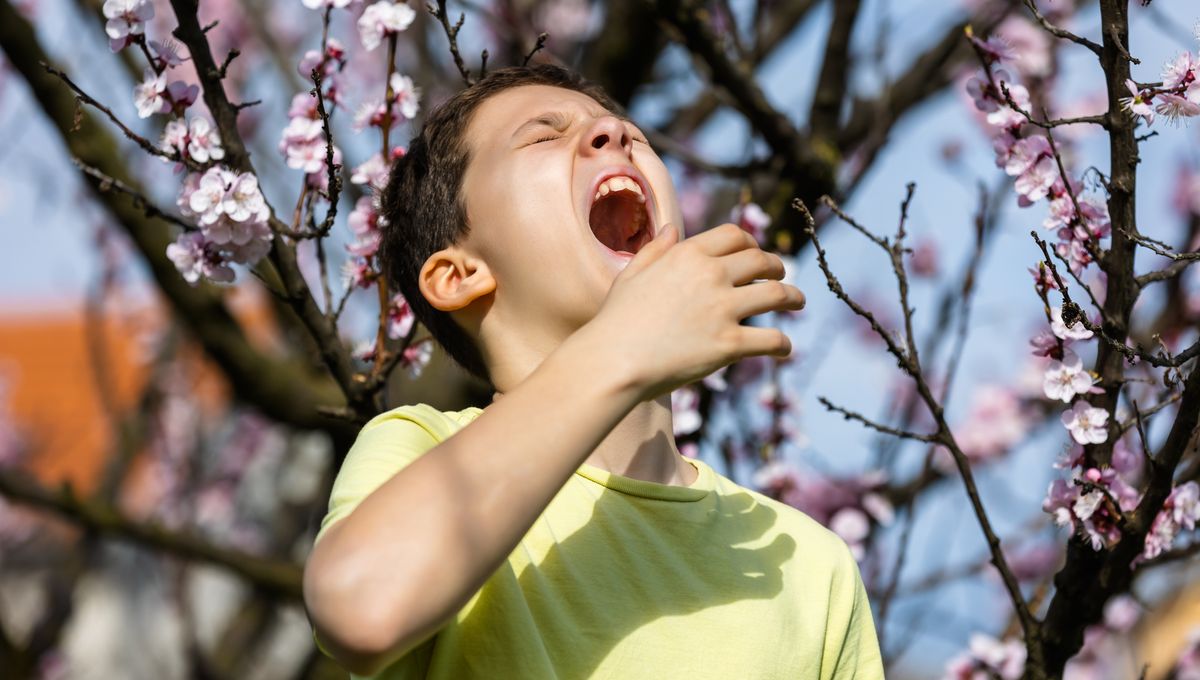
The Northern Hemisphere has reached that special time of year. Sun shining, flowers blooming, birds singing… and people sneezing. Pollen season, aka spring, is well and truly upon us. If you’re a hay fever sufferer, depending on the particular types of pollen that really get up your nose, you can now look forward to several months of obsessively checking the forecast and keeping Big Tissue in business. But perhaps you’ve been in the thick of this for a few weeks already? Is it just us, or is hay fever hitting earlier than ever?
A quick look at Pollen.com’s handy allergy map tells you that at the time of writing, levels are sitting in the medium to high range across much of the United States. Over here, in the UK, there have been warnings of an impending “pollen bomb”, now that we’re finally getting to see some spring weather. That’s when groups of trees all release large quantities of pollen in a short space of time.
Some trees create so much of the stuff that you can actually see it bursting forth in an impressive cloud of misery-inducing dust.
But as unpleasant as it is, at least hay fever doesn’t usually come as a surprise. Many of those with it know which plant species trigger them and learn to predict when their symptoms are likely to peak. So, what’s all this talk about it starting earlier than usual?
Dr Bernd Eggen, Senior Environmental Public Health Scientist at the UK Health Security Agency, addressed this question in a blog post earlier this year, when many people were complaining about allergy symptoms in the unconscionably early month of February.
Normally, the UK is blessed with three distinct pollen seasons. Tree pollen hits between March and May, followed by grass pollen until July. Pollen from weeds like mugwort starts to rise around June and can continue well into autumn.
Thanks to climate change, it looks as though some trees and grasses might be starting to release their pollen earlier than before. If these happen to be your personal poisons, Dr Eggen explains, you could start to experience a reaction as early as January. Best put antihistamines on your Christmas list.
This is backed by data from a recent study that looked at 52 years’ worth of pollen and fungal spore counts from two regions in the UK. They focused on birch trees and grass, as well as four different genera of fungi, and found that most of them were starting their pollen seasons earlier than before.
“Our study suggests higher temperatures experienced in recent decades are associated with higher overall abundance of some pollen/fungal spores, which may increase future disease burdens of allergies,” the authors wrote.
Of course, these data are just from the UK, so it’s not clear how well they would generalize to other areas. But other people have also been looking into this from a more general standpoint.
A 2022 review took a detailed look at how climate change is impacting allergies, including sections on pollen. From all the studies the review authors analyzed, they identified a number of ways in which increasing global temperatures could spell bad news for hay fever sufferers in the future.
Higher average temperatures “will lead to earlier flowering, increased pollen scattering in the air, and a longer efflorescence season,” they write. “Further climate change may lead to increased CO2 emissions, directly inducing photosynthesis and plant growth.”
But is there anything we can do? Beyond the global efforts required to try and halt the climate crisis before things get any worse, we at IFLScience favor the Japanese approach.
The Washington Post reports that some workplaces in the country – which sees a huge burden of illness from hay fever every year fueled by dense concentrations of cedar and cypress trees from reforestation programs – have resorted to subsidized tropical getaways for the worst-afflicted. The southern island of Okinawa is a popular option, with much lower pollen levels, but some have ventured as far as Hawai’i to escape the misery.
For most of us, though, relocating to an island paradise for a few months out of the year is not going to be an option. We’ll have to stick with the old standbys of staying indoors, making sure we know how to use our nasal sprays, and googling our symptoms in case it’s actually COVID. Oh, and stocking up on tissues from January – just in case.
All “explainer” articles are confirmed by fact checkers to be correct at time of publishing. Text, images, and links may be edited, removed, or added to at a later date to keep information current.
The content of this article is not intended to be a substitute for professional medical advice, diagnosis, or treatment. Always seek the advice of qualified health providers with questions you may have regarding medical conditions.
Source Link: The Pollen Bomb Cometh: Why Your Hay Fever Is Hitting Earlier Than Ever